Context
The artistic question is:
How can the invention of new workspaces allow us to reinvent our art, creative relationships and the future?
The project is directly linked to the newly established master’s programme in performing arts at the Danish School of Performing Arts. The purpose of the project is:
- to contribute to the existing artistic research field on new forms of collaboration and invent new workspaces
- conducting artistic research collaboration between teachers, students and researchers
- to ensure that the teaching in the Master’s programme in Performing Arts is anchored in a solid base of artistic research by including the project in the curriculum
- to build on methods from existing KUV projects at DASPA (Danish art School of performing arts)
Existing structures of thinking, being and coexistence define the present and therefore shape the future. By challenging these given structures together, we can reshape the potential of the present and the understanding of the future. We need to create new stories and fantasise to explore the radical potential of the future. As an art institution, we want to help unfold new imaginations and narratives. In a time of great and unfathomable societal upheaval, such scenarios and future narratives can create new possibilities, hopes and spaces for action.
“In the world to come, everything will be as it is here. As our space is today, so it will be in the world to come (…) everything will be as it is now. Just a little bit different”.
Ernst Bloch traces, 1930
Our future stories will seek to uncover the “something different” that separates our uncertain present from a sustainable and strong future.
Workspaces in traditional theatre work are mostly defined by centralised organisation, solid structures, identity-based relationships and repetitive patterns, where it is complicated to try to position yourself as an equal artist and competent peer
Centralised organisation
Distribueted organisation

The project will discard known processes and existing structures and take a distributed organised workspace as an initiating step to develop a radical new framework for the future of performing arts. Words that we include in the new workspaces could be agile, open-minded, social, real-time, diversity, bottom-up, transparent, low barriers, non-hierarchical, feedback-based, entrepreneurial lifestyle.
The performing arts need tools to create new collective stories to be able to deal with the “problems of the future”. Co-creation and shared responsibility create an ease with which process and material become ambiguous for many people.
The project is based on identifying and expressing our hopes, wishes and visions for the future in the new workspaces. Futurology works towards the expansion, deepening and cancellation of known expectations. By seeing the creation of future radical potential and ways of working as a method rather than a goal – a method that uses our imagination to tackle the challenges facing the performing arts and society – the project aims to move away from the idea of a product or ‘blueprint’ and instead takes the workspace as its starting point, where the artistic product becomes a secondary outcome of the workspace’s framework.
By bringing in thinkers and connecting with other ongoing and completed KUV projects, we will work with new combinations of people, resources, language, behaviour and rituals to create a wide repertoire of workspaces.
In exploring and testing new and different workspaces, we can lean into a diverse landscape of existing practice and theory, exemplified here:
Donna Haraway “Staying with the trouble” (2016).
“It matters what matters we use to think other matters with; it matters what stories we tell to tell other stories with; it matters what knots knot knot knots, what thoughts think thoughts, what descriptions describe descriptions, what ties tie ties. It matters what stories make worlds, what worlds make stories.”
Ole Fogh Kirkeby “The New Leadership” (2004) and “Protreptics – self-awareness and conversation practice” (2008) – work on value sets for our workspace and new ways of conversing.
David Bohm “On Dialogue” (1996) – talks about “Suspended judgement” and staying in the space where we wonder together.
Quentin Meillassoux “After Finitude: An Essay On The Necessity Of Contingency” (2008) – dismantles the correlationism that has formed the philosophical basis of the relationship between man and the world. He points beyond the limits of the conceivable and frees man from his bondage to rationalism, deduction and logic.
Rane Willerslev “Rygrad og rummelighed” (2019) – shows us how to look at the possibilities of the future with a historical perspective, such as distributed organisation, which was both the Stone Age way of organising society and also the way digital networks are organised.
Our other working methods will be a further development of experiences and developed methods created in the KUV projects already developed at DDSKS. Currently, a number of these projects (all funded by the Danish Ministry of Culture) are being completed, including Inger Eilersen’s “Human Migration”, Rikke Lund Heinsen’s “Semper plus Ultra – New spaces and directions in performing arts”,
External Collaboration
We will collaborate with external experts in each sub-project. We will have an ongoing collaboration with the Copenhagen Institute for Future Studies, a non-profit institution that generates and analyses the most qualified assumptions about the future.
Framework for the study
Overall framework for the sub-projects is developed by Inger Eilersen
“The managerial task is to create framework conditions and facilitate development processes that expand the room for manoeuvre for employees. The rule of thumb here is that the more the content is ‘open’, the more you need to control frameworks and processes … The more management leaves analyses, assessments and decisions to employee groups, the more they need to offer and maintain clear, well-structured and authorised framework conditions for the work process.”
Molin, Jan (2003) – Organisation and management – in a development perspective CBS-handelshøjskolen, Copenhagen
The above will be one of the understandings we will work from to create freedom within a set framework for all participating parties. Another overarching task will be to gather input, thoughts and documentation, as well as take care of administrative processes.
Imagining the future; on a journey towards new workspaces and stories of the future, is divided into three phases consisting of two sub-projects with laboratory studies, the encounter of workspaces and future stories with the audience, and “The Game”.
PHASE 1 consists of: Subproject 1: Co-created future stories; method and concept and Subproject 2: Collaboration with post-human agents in a new materialistic perspective.
Common to both sub-projects is that they are developed in new workspaces where the individual or a small group sets the framework for each investigation. This means that each subproject has many smaller studies embedded in it. In the different workspaces, we imagine the radical potential of the future, which can have different artistic expressions such as text, improvisations, installations, video, interventions, performance-lectures, exhibitions and the like. These can take place on both physical and digital platforms. The reflection on the developed potential is an integral part of each study.
Participants’ contributions
Every participant, be it teachers, futurologists or students, is for a shorter or longer period of time, individually or as part of a smaller group, responsible for initiating new workspaces. They set a framework for themselves and the other participants in the labs to wonder together about questions regarding the future.
This will result in approximately 15 trials of different workspaces and associated artistic sketches of future stories/expressions. Each test will be reflected and documented by the group as a whole and is intended to collect “rules” for a “game” that we will put into play for the final knowledge sharing of the project. All findings of the framework
outcome of sub-projects 1 and 2 will be knowledge about the new workspaces and artistic sketches of the explorations.
PHASE 2 – Workspaces and the future stories‘ encounter with the audience.
The outcome of sub–projects 1 and 2 will be knowledge about the new workspaces and artistic sketches of the explorations.
We will further develop some selected workspaces and artistic sketches.
PHASE 3 – “The Game“
According to the explorative nature of the project, the exact format of the final outcome will be open to the process, but in the end we will create “a game” to set the knowledge and experience of the project in motion.The ambition is to create an artistic reflection on the project where participants experience a mini version of the accumulated knowledge.
The intention of “The game” is to create an open structure where an artistic outcome is not unambiguous. We create a set of rules consisting of elements that can create new results at any given time.”The game will thus consist of interchangeable processes, artistic elements, rules and people. An art product that takes place within the framework of the game will therefore always be changeable, we call it work-fluid. This will create radically different works than those we mainly work with in the performing arts, where the work of meticulously perfecting the repetitive work is the norm.”The game” will provide once-in-a-lifetime experiences and contain ever-changing elements and processes.
Workspaces and methods
The ambition to co-create the stories of the future is significantly connected to a deep interest in creating future workspaces where participants can reinvent and expand the notion of working artistically together. The exploration of new workspaces is strongly connected to the future
co-creative organization.
New workspaces are developed as an important part of creating stories about the future. How we work, how we interact and how we speak are crucial components of our overall goals and future work aspirations.Other important points of attention when creating new workspaces are how to work equally towards what lies in our midst and how to create an expansive, real-time landscape for research and expanding modes of production.
In a world characterized by the uncertainty and struggles of the precariat, the movements and paradigms that indicate a strong need for spaces where we can actually start over and approach each other with ears, heart, inspiration and trust.Can we reinvent the ability to make ourselves available to each other, to the processes and to the future?Can we concretely shape and create values such as equality, generosity, curiosity, open-mindedness, non-hierarchy, activism and representation in our work actions?
Documentation and communication of the project
The project is documented through various formats, including open labs, images, recordings, logbooks and selected interviews with participants. The project is continuously shared during the research period internally at the school and with other curious people through social media, teaching and presentations. Final documentation 10 short films on a digital platform.
Organisation, ledership og qualifications
Formally, the project is led and facilitated by Associate Professor Inger Eilersen. In accordance with the project’s approach to and inherent focus on collaboration, all other project members will participate in the planning, organization and implementation of both the research and knowledge sharing events, including the open labs, the closing event and ongoing knowledge sharing.
Eilersen has built up considerable experience in developing and anchoring artistic development activities at the Danish National School of Performing Arts. Eilersen has been responsible for KUV at the performing arts school from 2012-2016, and she has been involved in initiating around 20 KUV projects at the school. She thus has extensive experience in guiding project holders in application and development work. Eilersen has introduced artistic development work (KUA) to the school’s students and has been a driving force in the development of this subject area. She thus has considerable experience with artistic development activities within the framework of higher education under the Ministry of Culture.
Other participating teachers: Rikke Lund Heinsen, Mikkel Flyvholm, Peder Dahlgaard, Sarah Woods, Tine Damborg, also have experience and qualifications that contribute to the quality and sub-organization of the project.
Ancoring and resources at the educational institution
DASPA provides the necessary studio and performance space for the project (practice, open labs, symposium). The school’s production department provides technical support and equipment, while administrative resources are allocated to run the supporting organizational processes.
In addition to resources within the school, we rent external premises to explore different locations and environments relevant to the project. DASPA is dedicated to supporting artistic research projects and is currently developing the field through workshops, discussion forums and involvement in national and international networks for artistic research, which this project will also benefit from. Finally, as a collective research project directly connected to the Master’s program in Performing Arts at DASPA, the project is firmly rooted at the school.
Gender balance
The project will aim to create a balanced gender representation, which is important in a field
area that was previously dominated by the male artistic genius.
EXPANDED SUB-PROJECT DESCRIPTION
Part 1) Co-created future stories; method and concept
The future doesn’t exist in the present, expectation and premonitions do. The future is shaped in the present through such expectations. Expectancy theory searches for methods to discover and uncover the incomprehensible and invisible elements that surround us. People’s beliefs about what is to come and how they use such beliefs to think about the future are central to our everyday lives and so embedded in our lives that we often don’t notice them. It is difficult to get the distance needed to observe and analyze what is happening. By methodically mapping such expectations in explorative models and new workspaces, we will study possible scenarios for the future.
Futures studies is a new science that works with different methods (normative, predictive and explorative) that can be used as raw material in this laboratory. Performing arts have always dealt with fictional circumstances and scenarios based on questions of “What if?”. There is methodological overlap between performing arts scenarios and futurology.
Concepts, concepts and methods can be explored in different co-creative workspaces by asking questions, exploring the artistic answers, documenting them, reflecting on the potential of associative and intuitive spaces.
In this sub-project we will explore different methods and concepts in an attempt to create new stories and new ways of working.
In this sub-project we will explore different methods and concepts in an attempt to create new stories and new ways of working. The project will create workspaces such as re-enactment of different methods, e.g. related to futurology, to investigate how it is possible to develop scenic concepts based on these.
concepts according to these. In the project, scenic possibilities in scientific/philosophical texts will be spatially investigated. Through the analysis of future scenarios, the project will organize workspaces where different models of representation will be explored. Similarly, different forms of audience interaction in new digital realities will be explored.
Part 2) Collaborating with post-human agents in a new materialistic perspective
The subproject will attempt to move beyond the boundaries of the human/post-human, but also beyond the linear perception of time, which distinguishes sharply between past, present and future. The subproject is spurred by the major changes in digital technologies that are currently taking place worldwide. In recent years, a distinct posthuman and new materialist perspective has gained prominence in art and science. In performing arts and artistic research projects, this perspective has duly manifested itself in the relationship between the human and the post-human. Artists have challenged the modern Anthropocene view and encouraged spectators to think of the human agent as part of a relational ontology that affects and is affected rather than a privileged species.
This subproject maps the extraordinary phase we are in as we explore our reflections as artists on some of the biggest challenges we currently face.
Our work starts with the notions that:
We are each other and others are us.
We are machines and machines are us.
We are the world and the world is us.
The subproject will fantasize about the following:
On the way to the future, people’s living conditions will gradually change in line with the many technological innovations that each stage leads to. One day, human life, body and consciousness will change so much compared to now that it may no longer be meaningful to say they are the same,
Such a future is likely, and perhaps already in this century. The creation of a new type of post-human existence could mean improvements in quality of life: longer life, possible immortality, higher intelligence, better mood, more freedom. In the near future, we will have the technological tools to
create superhuman intelligence. While humans are “improving”, all other creatures are left behind, so we also examine the post-human era from their perspective.
Workspaces consist of, for example:
Installational studies of AI effects
Investigations into physical sustainable materials
Sound installations from the future
Adopting the perspective of other non-human beings as ego in the face of nature.
The subproject will investigate how the post-human human is subject to premises other than itself, how this affects human self-understanding and what it does to our patterns of action.
Documentation, summary of workshops incl. reflections
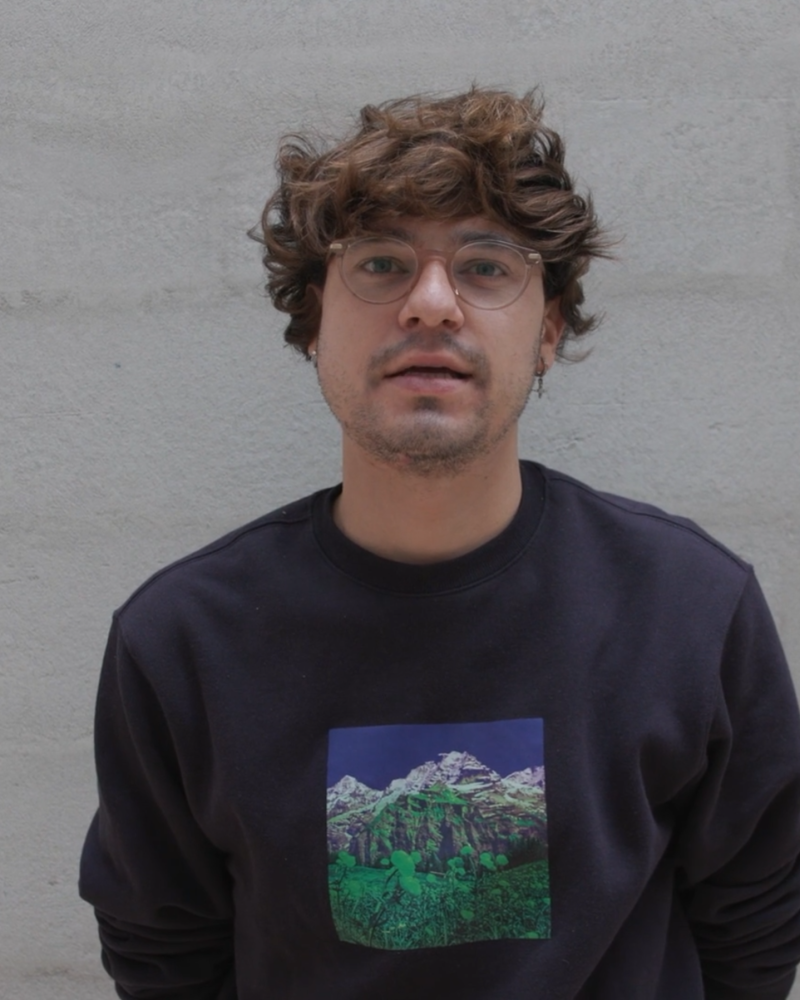
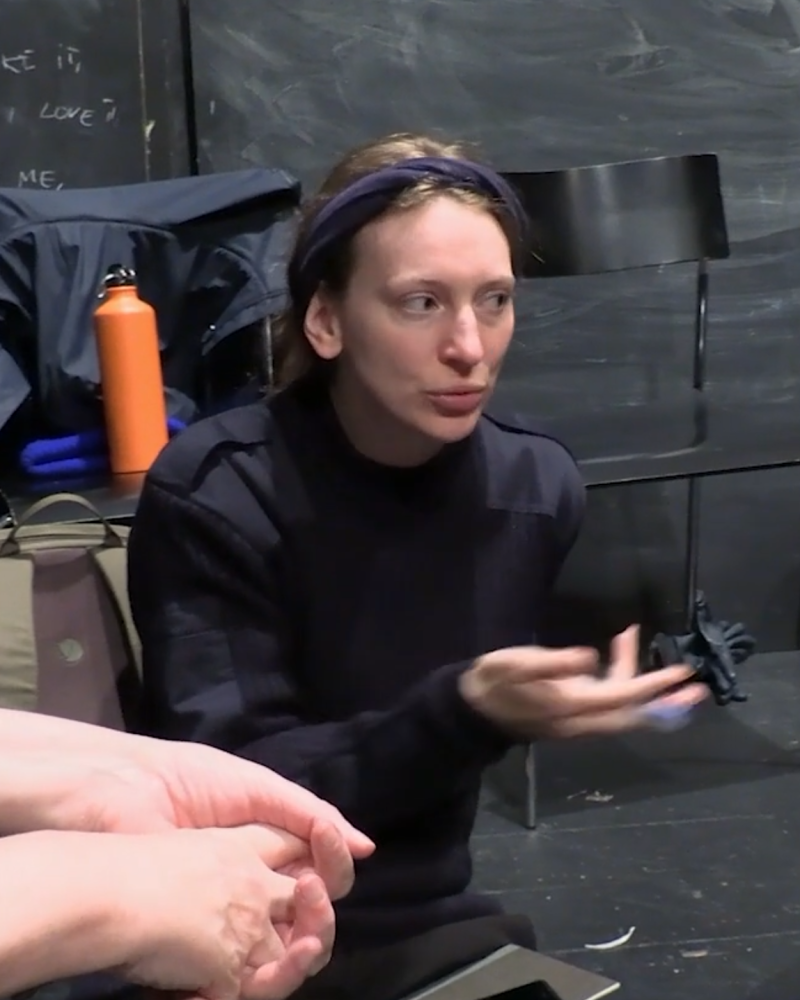
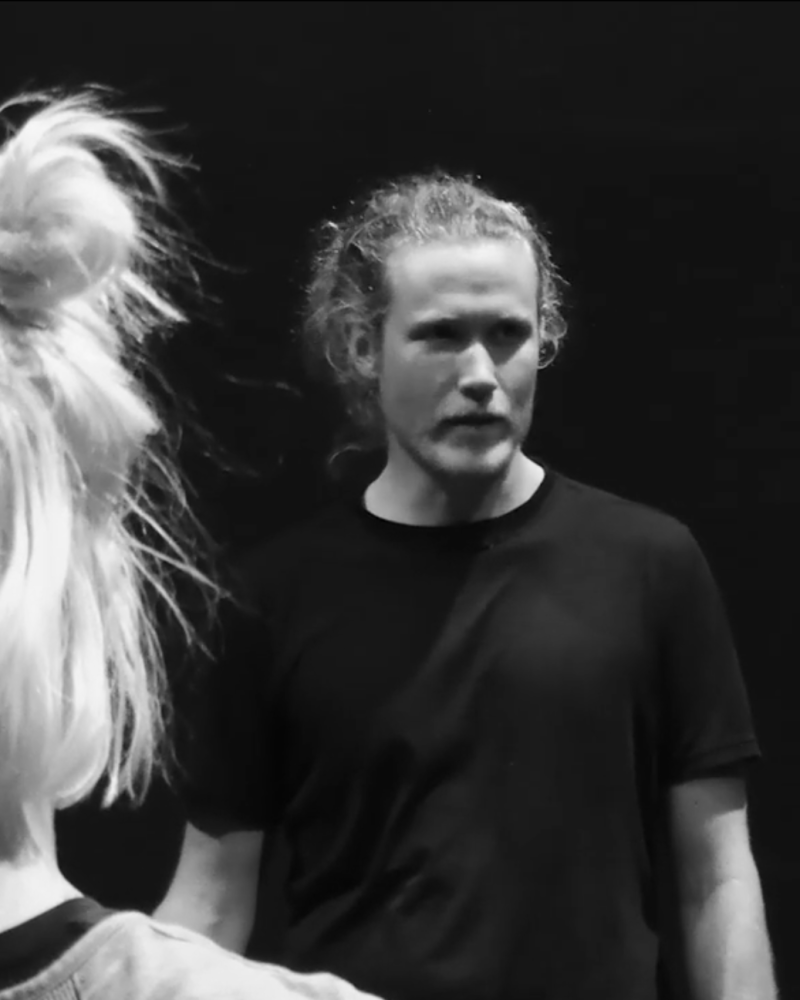
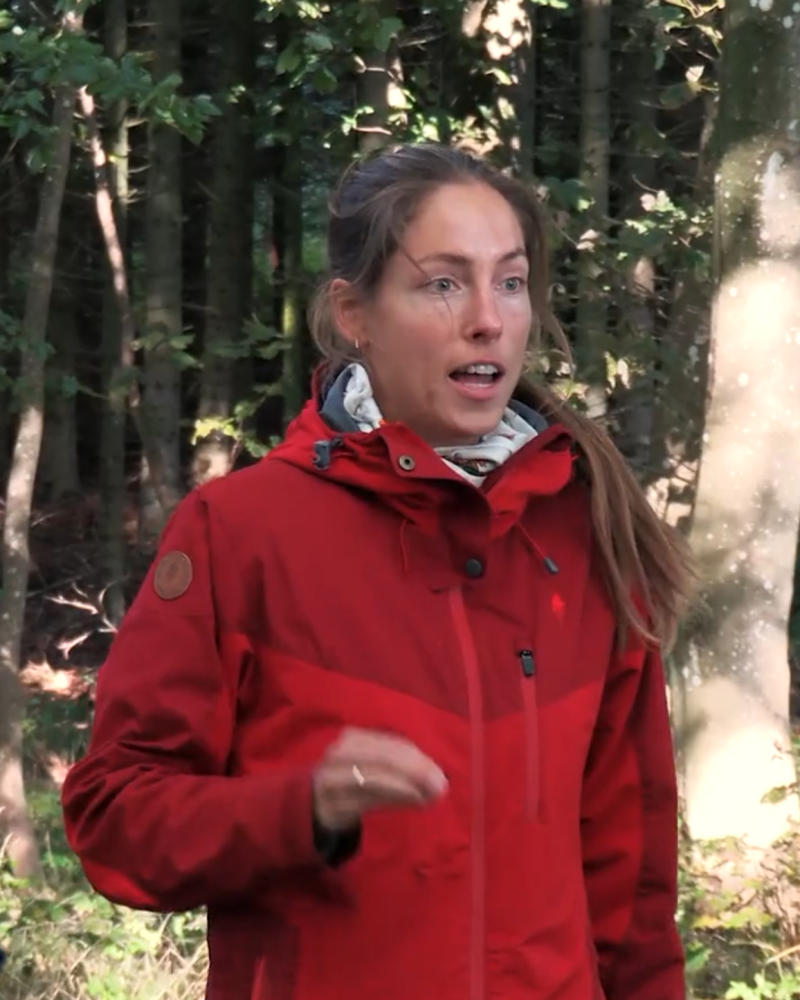
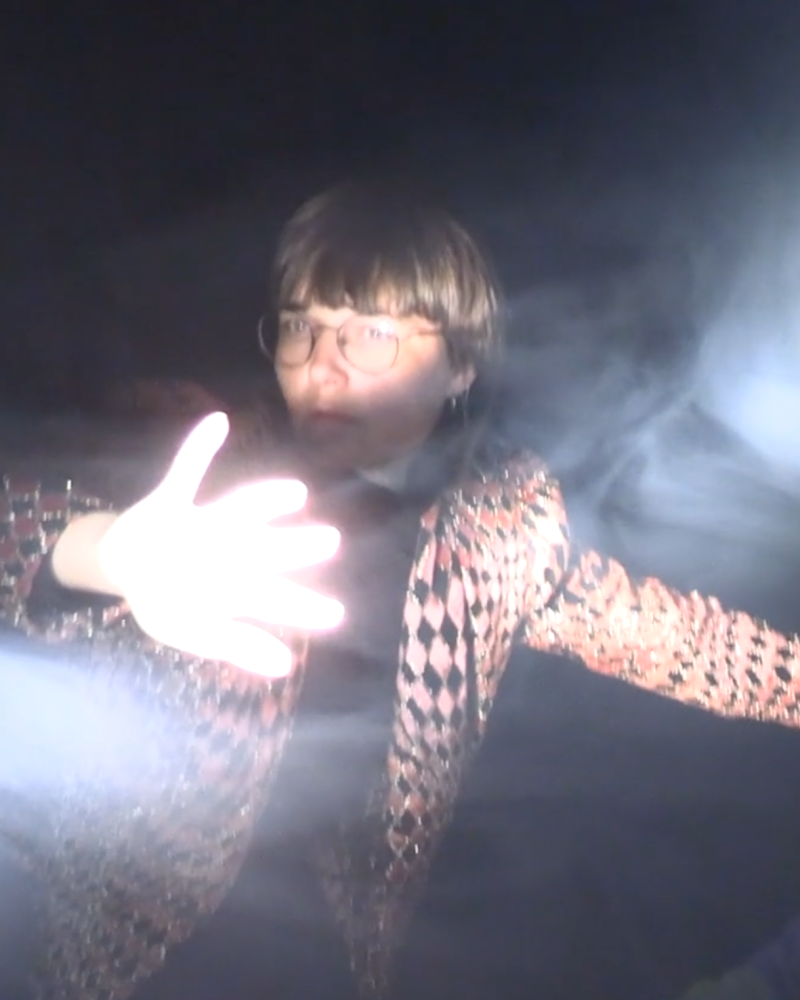
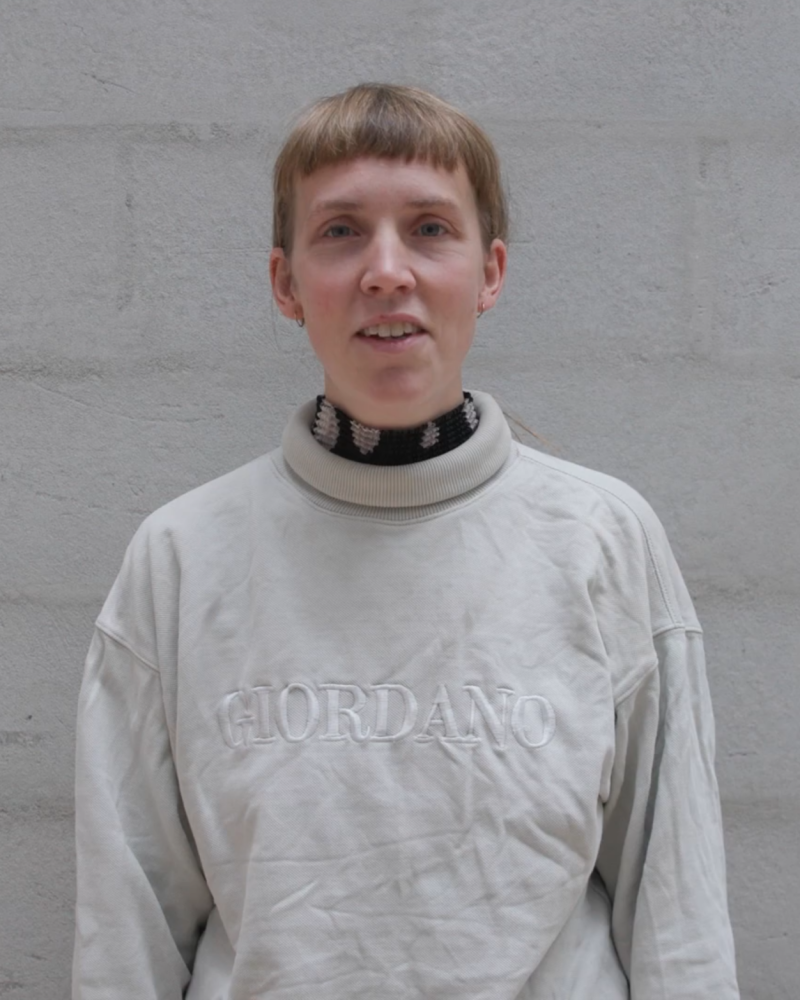
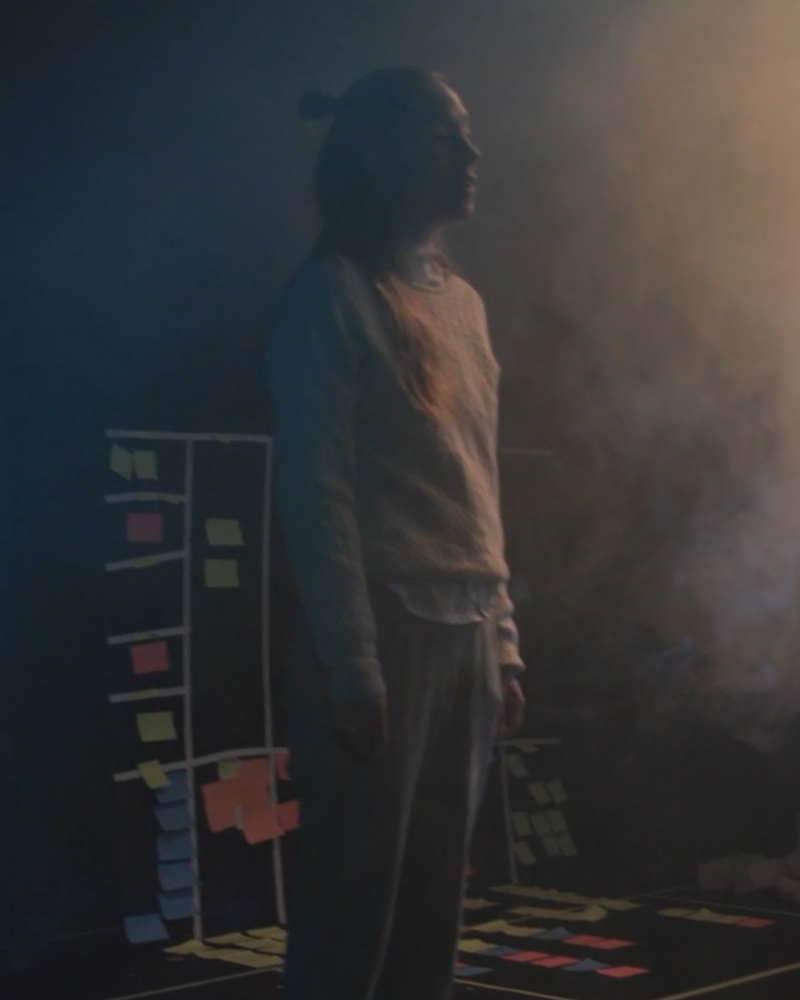
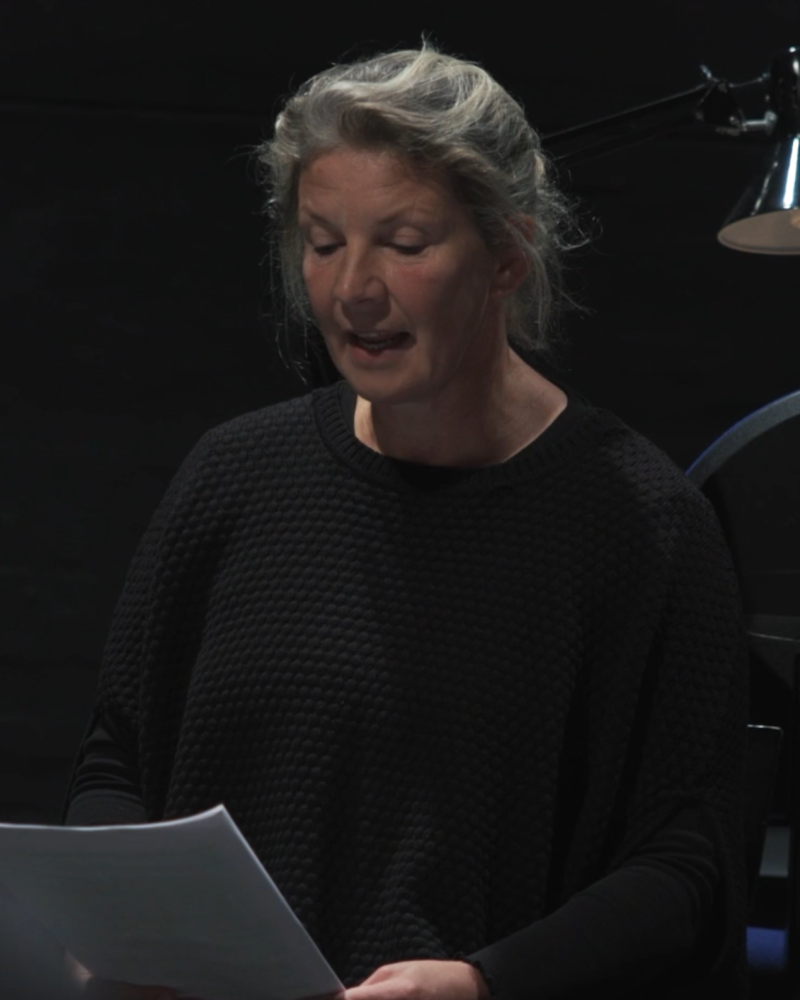
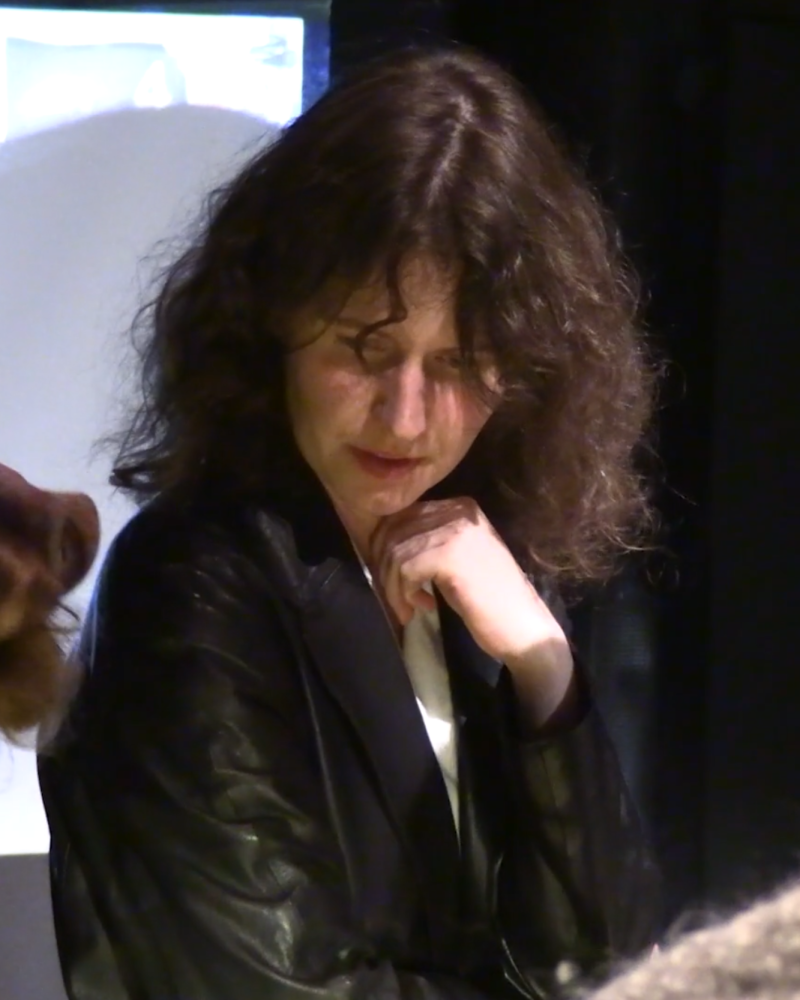
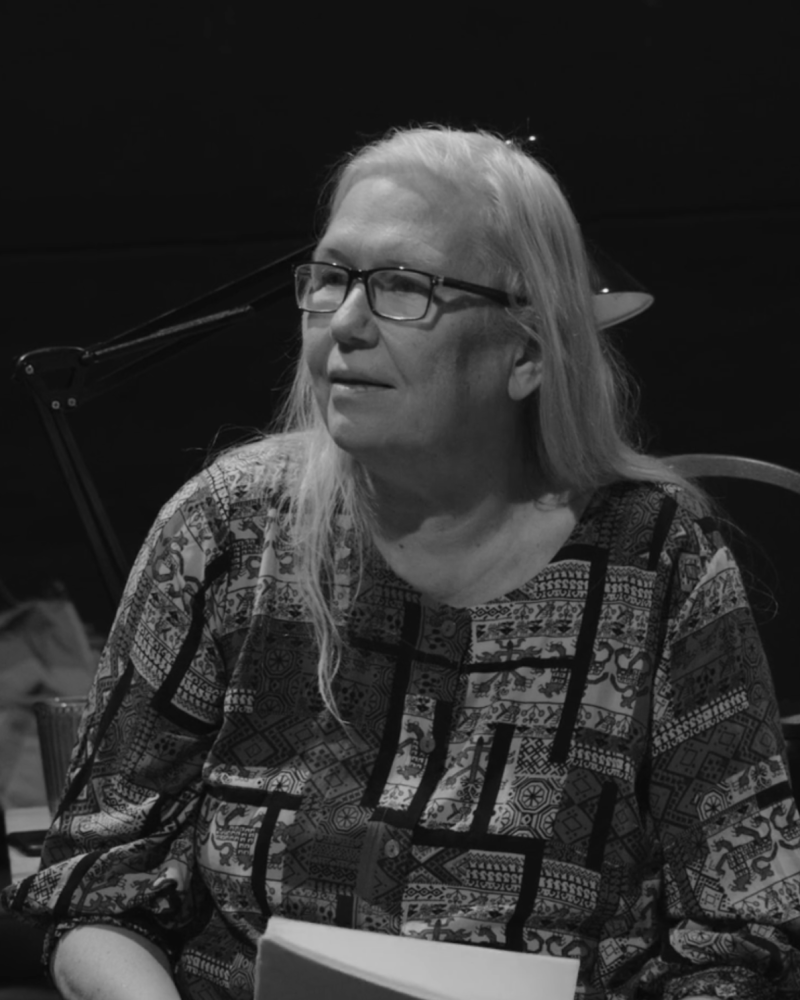
Students comments from working with the project.
"I wish we had had 1-2 weeks to do workshops for each other in the first year. It created a greater understanding of each other's practices and shaped the group in a strong way. The diversity of workshops was very enjoyable and the fact that we didn't know exactly what was going to happen created a sense of excitement and curiosity, which is quite fruitful for the energy. I think it was a good idea to go on a trip one of the first days, as going somewhere unknown together for a whole day draws a circle around the group in a beautiful way. Just being away all day did the work. I found myself taking on the leadership of the trip. It reminded me that this role works quite well for me as I like structure and taking care of planning. I am very impressed by the dedication and generosity of all my fellow students who put a lot of effort into their workshops. This also applies to the teachers, who I found to be very dedicated to the job. Thank you all for that. "The Game" was an inspiring format for generating material for a performance. What I found powerful about the format was that we created shared material, shared frame of reference, collective ideas and collective ownership of elements that could be combined and reinterpreted. Building on a common base of material from everyone's dedicated contributions enabled us to create quite interesting "performances" in a short time."
Tami Panik vibberstoft
"I see the potential for this course to be one of the first meetings and courses at the beginning of the master's program. I have learned so many new things about who people are, what they are interested in and what their practice is like. It's been enriching to get that insight and it's something I've really missed. I've enjoyed every single workshop. Of course, I was sad that I was sick on the day of the workshop, but on the other hand, you could say that the communities and the people we visited got all the attention and speaking time, which was also my hope. I wanted to point out more collective ways to organize in the future. It was great to get new input from outside and to get out of the city, and I really appreciated the two weeks. It's been great that people have put so much energy and effort into the projects and I feel like I've learned a lot from everyone!"
Marie Boye Thomsen
"I really enjoyed the format of the two weeks based on half-day and one-day workshops. It has been interesting to realize once again how many different practices are present in our group and I agree that it could definitely be something to include in a first year program as a great tool to get to know each other's practices. Because everything was created and experienced within the group of artists, I am curious to see if there could be a possible performance development that brings/tells outside the group about our hopes, reflections, fears and suggestions for the future. After two weeks of workshops based on the first semester of the first year, maybe the group could meet again during the second semester and start using the shared experiences as a common material to create together. Thank you so much to the teachers and my classmates."
Anna Carla Penati
"Imagining the future" has stayed with me as a series of methods. A way of seeing performance art not just as a tool for creating spectacle, but as a way of thinking. A way of enabling a collection of people to engage with a cause, not just with rational thinking, but with their whole being. The future becomes a container rather than the content. Pillars that last." A way to move and care while being scared, challenged, laughing and crying. Surrendering to another's thoughts and letting your thoughts guide another. "
Sonja Ferdinand
"Overall, I really enjoyed each workspace and as already mentioned, it was just very rewarding to finally get a physical feel for the methods and investigations from each of us in the class. I encourage this workspace to be a part of the first semester in the future planning of the MFA. It felt very concrete and meaningful to think of ourselves as creators in light of shaping one of many futures. It feels like shaping the future, not just imagining it. It made me feel strong in a community of beautiful artists. I could imagine this module being in closer collaboration with the Copenhagen future study lab initiative."
Nana Anine Jørgensen
"I also think these weeks really stood out in many ways: The way that for the first time we actually experienced each other's practice on our own bodies, not just by explaining to each other what we meant when we said: "I do it this way", and in a way that's exactly what theater and performance is about; feeling it on your own body. I think it would be great to have this course in the first half of the first year and then again in the second year. Because it's also a way to experience how we develop as creators and how we think, I felt very honored in a way. Being led by my colleagues felt beautiful and like receiving a gift in some way. I think it also contributes to our individual archives of methods and helps us not to get too stuck in our own ways. I also think there's great potential for the game. I think I will think about how I can implement it in my work."
Sophie Grodin
"What really felt special to me was the blurring of the false lines between instruction and collective; how we managed to create collaborative spaces where we went in and out of holding the space and being held. Both are important places to think from, and the oscillation between them made it a laboratory that could potentially foster new collaborations. I feel that the diversity of practices presented in such a generous way could have benefited from a more thorough feedback format. It was important to harvest for the 'game', but at the same time it would have been nice to delve into something like the 'das arts' methodology to really unfold the different practices, where they come from and where they could potentially go."
Heiki Riipinen
occupation"What is clear to me after 2 weeks of imagining the future is: The beauty and power that lies in giving each other workshops... in general, but also specifically in showing each other and inviting others into the spaces. I haven't considered this as part of my practical research, but now I'd like to explore it further. Firstly, it is in a way generous to choose the strategy of "showing spaces" as the organizational part is obvious, so it is a visible act of care. Secondly, there is a tremendous power in a space that has not been created "artistically" but has developed on its own. It allows you to find out things about this world that are not curated for you, but the curation is in the questions you ask, the paths you choose to walk through it and the way you present yourself and will be perceived in it. What is still alive is also the importance of working collaboratively, also as a way to strengthen the potential of artistic collaboration. For me, even as an exchange student, the atmosphere and dynamics between the MA students as a group have changed a lot when I compare before and after the course. The recipe for this change is so simple, it's all about spending interims and free time together, eating together and doing generous things for each other (like offering workshops). I think this work is so important and I'm grateful for it. for being able to attend, as it also helped me to get familiar with the group, but I can also see that it would have been good for the graduate students to have more of these events in their very first semester. I'm also taking the workshop with me, working with Nana, to see how both of our interests merge in a productive way. I would like to work with Nana again, and I would like to continue with the exercises and their sequence, maybe as a workshop, but also as a strategy to produce material during a rehearsal (which was the original idea)."

Simon
occupation"I liked visiting my fellow students' workplaces and getting to know them with their interests, skills and ways of working. It was really inspiring and diverse. I saw my fellow students more clearly and accurately when I knew their practices in this way. I enjoyed working with Sophie, Sonja and Heiki to develop our workspace and it worked well for us as a starting point/stepping stone for our continued work with the festival, the continuity is something I generally like and have sometimes missed."

Amanda Tilia Hamele
occupation"For me, it's mostly the feeling of accessing other students' working methods. It may not be a complete picture, but since educational contexts usually mean a continuous circulation of already known artistic practices, this in turn will lead to the same tools being used repeatedly until the students have become teachers teaching the same tools to their new students. This glimpse of a sharing that usually gets too little space in a success-driven environment, where everyone is somehow mostly focused on their own career, was very welcome."

Tjörvi Lederer
occupationThe overall theme of sharing and getting feedback in the way we did was an experience I will take with me. It was a perfect extension of the three weeks before with "artistic entrepreneurship and artistic response", where we used the "das art" feedback method a lot. I felt there was so much potential in developing my own work/methods/teaching. I found it inspiring and entertaining to find theater elements, themes, etc. in the workspaces. It was a great way to gather elements for the "game". Using the workspaces but freeing the elements from their original context for something else: "The Game", new workspaces, other games, a performance or something else. It can be very useful and nice to have such parallel work going on. Now we all have this colorful shared experience of two weeks with different workspaces that we can always refer back to.

Durita Dahl Andreassen
occupation"Notions of the future reflections: I got an insight into the approach and methods from my classmates, which I really appreciated. I would have loved to get to know my group on the floor earlier in the program. It's a good start to get to know each other's practices and get a feel for potential collaborations. Our trip to different "farms" was very inspiring and left some thoughts in the weeks after. I was reminded of how important the connection to nature is and how it could be possible to live alternative concepts. At the same time, I also questioned them. The trip strengthened our group. We really enjoyed spending time together. For me, the experience with the workshop from Simon and Nana stood out. The way the workshop was structured, where we warmed up and then copied a classmate and then made a short choreography and a personal text, was inspiring. Finally, we put the different steps together and rotated. It's a way of creating material that I find really interesting. I realized that the game is the beginning of a method that I can use and test in future collaborations."

